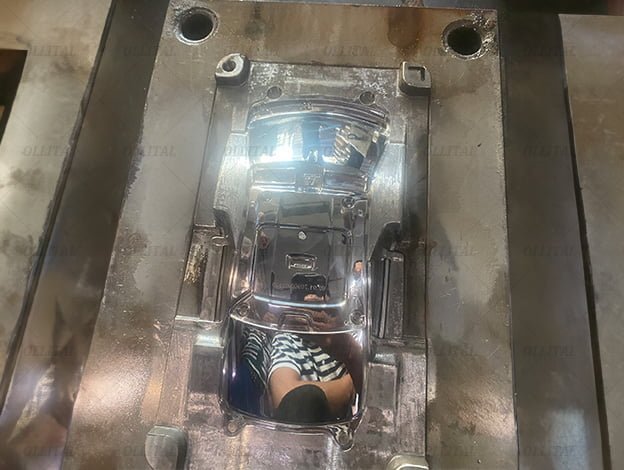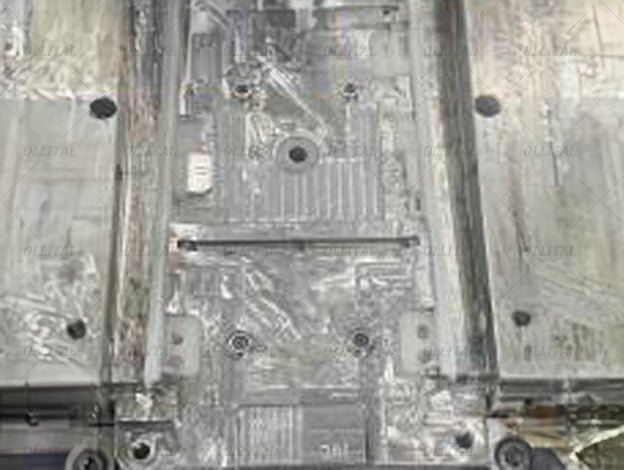Five Recommended Industrial Cleaning Methods
September 7, 2023
Industrial cleaning is a crucial part of maintaining equipment and facilities. Effective cleaning methods not only enhance equipment efficiency but also extend its lifespan and reduce the frequency of malfunctions. As technology advances, industrial cleaning techniques are continually evolving. This article will provide a detailed look at five recommended industrial cleaning methods, discussing their pros and cons and offering suggestions to help you choose the best cleaning solution.
1. Ultrasonic Cleaning
Ultrasonic cleaning uses ultrasonic waves in a liquid to create cavitation effects that clean the surface of objects. This method is ideal for cleaning equipment with complex shapes and tiny components. The ultrasonic transducer converts high-frequency electrical energy into mechanical vibration energy, creating numerous tiny bubbles in the cleaning liquid. These bubbles rapidly burst, producing strong micro-shock waves that dislodge dirt and contaminants from surfaces.
Advantages
– Efficiency: Ultrasonic cleaning reaches into the smallest crevices and holes that traditional cleaning methods cannot.
– Gentle: It does not cause mechanical damage to the surface, making it suitable for delicate parts like electronic components and watch parts.
– Eco-friendly: Typically uses water-based cleaning solutions, reducing environmental pollution and eliminating the need for harsh chemicals.
Disadvantages
– High initial cost: The initial investment for ultrasonic cleaning equipment can be high, especially for large industrial units.
– Limited scope: Not suitable for cleaning large equipment or large surface areas, mainly used for small, precision parts.
Recommendations
Ultrasonic cleaning is perfect for applications requiring high precision and efficiency, particularly for cleaning complex shapes and small parts. It’s an ideal choice for maintaining small components and precision instruments.
2. High-Pressure Water Jetting
High-pressure water jetting uses powerful streams of water to dislodge surface dirt and deposits. The effectiveness of this method depends on the water pressure and flow rate, which can be adjusted to meet different cleaning needs.
Advantages
– High efficiency: Quickly removes stubborn dirt and deposits such as grease, rust, and scale.
– Versatile: Suitable for a wide range of materials and complex shapes, from large equipment to internal pipe walls.
– Chemical-free: Uses only water, reducing the use of chemicals and making it safer for the environment and operators.
Disadvantages
– High water usage: Requires a significant amount of water, making it unsuitable for areas with limited water resources.
– Potential damage: High-pressure water jets can damage delicate surfaces, especially on older or heavily corroded equipment.
Recommendations
High-pressure water jetting is ideal for cleaning large equipment and hard surfaces, particularly in the oil, shipping, and construction industries. It’s highly effective for cleaning pipe interiors and removing stubborn deposits.
3. Chemical Cleaning
Chemical cleaning involves the use of chemical agents to dissolve or break down dirt and deposits. It’s commonly used for cleaning heat exchangers, condensers, and boilers. The choice of chemical depends on the material of the equipment and the type of contaminants.
Advantages
– Deep cleaning: Effectively removes internal deposits and corrosion products, especially those that are difficult to remove by physical methods.
– Fast: Cleans quickly, allowing for large areas and complex structures to be cleaned in a short time.
– Specialized: Suitable for specific industrial needs in fields like petrochemicals, pharmaceuticals, and food production.
Disadvantages
– Chemical residue: May leave chemical residues that need to be properly handled to ensure safety.
– Environmental impact: Some chemical agents can be harmful to the environment and must be carefully disposed of.
– Operational risks: Requires professional handling to avoid damage to equipment and harm to personnel.
Recommendations
Chemical cleaning is suitable for applications requiring deep and specialized cleaning, particularly for internal equipment surfaces. When choosing chemical agents, consider their environmental impact and ensure proper safety measures.
4. Laser Cleaning
Laser cleaning uses high-energy laser beams to irradiate the surface of an object, causing contaminants to vaporize or detach. This emerging industrial cleaning technology offers high precision and efficiency.
Advantages
– High precision: Precisely cleans small areas without damaging the underlying material, ideal for precision equipment and sensitive materials.
– Eco-friendly: Does not use chemical agents and produces no waste water or gases, making it environmentally friendly.
– Automated: Easily integrated with robotic systems for automated cleaning, improving production efficiency.
Disadvantages
– High equipment cost: Laser cleaning equipment is expensive, with a high initial investment.
– Technical expertise: Requires skilled operators for effective use and maintenance.
– Limited scope: Less effective for large areas and deep-seated contaminants, mainly suitable for surface cleaning.
Recommendations
Laser cleaning is perfect for tasks requiring high precision and stringent cleaning standards, such as in aerospace, electronics, and artifact restoration. It is an excellent choice for automated and eco-friendly cleaning applications.
5. Dry ice cleaning
Dry ice cleaning uses dry ice particles to impact the cleaning surface under high-speed jets, removing dirt through physical and chemical effects. The dry ice particles sublimate during the impact process, directly changing from solid to gas, taking away dirt and residue.
Advantages
– No residue: After the dry ice sublimates, it directly turns into carbon dioxide gas, leaving no residue, avoiding secondary pollution.
– Environmental protection: No chemical solvents are required, which is environmentally friendly. Dry ice is a solid form of carbon dioxide and does not produce waste liquid.
– Non-conductive: Suitable for cleaning electrical equipment and electronic components without causing short circuits or damage.
Disadvantages
– High cost: The production and transportation costs of dry ice are high, and the cleaning equipment also requires professional maintenance.
– Complex operation: Professional operators are required to operate to ensure safety and cleaning effect.
Recommendations
Dry ice cleaning is suitable for cleaning difficult-to-remove substances such as grease, paint, resin, etc., especially for cleaning electrical equipment and electronic components. In the food processing and pharmaceutical industries, dry ice cleaning is also popular for its residue-free and environmentally friendly characteristics.
Recommend our dry ice cleaning equipment to everyone
Our dry ice cleaning equipment combines advanced technology and high-quality materials, and is designed for efficient and environmentally friendly industrial cleaning. Here are a few key benefits of our equipment:
– Efficient cleaning: Our equipment can quickly remove all kinds of stubborn dirt and improve cleaning efficiency.
– User-friendly: The operating interface is simple and intuitive, easy to use, even novices can quickly master it.
– Durable and reliable: Made of high-strength materials, it ensures that the equipment can operate stably in various harsh environments.
– Full support: We provide comprehensive after-sales service and technical support to ensure that your equipment is always in the best condition.
Advantages of dry ice pellet production machine
If you need to produce dry ice pellets yourself, our dry ice pellet production machine is your best choice. Here are the features of our production machine:
– Efficient production: It can quickly produce high-quality dry ice pellets to meet various industrial cleaning needs.
– Cost savings: By producing dry ice pellets in-house, you can significantly reduce the purchase and transportation costs of dry ice.
– Strong flexibility: The size and density of dry ice pellets can be adjusted as needed to adapt to different cleaning tasks.
Purchase our equipment and enjoy exclusive discounts!
We are running a limited-time promotion. Purchase our dry ice cleaning equipment or dry ice pellet production machine now, not only to enjoy special discounts, but also get additional gifts and free training courses. Don’t miss this opportunity to improve your industrial cleaning efficiency!
Contact us to learn more about our equipment and offers. Our professional team is ready to provide you with help and support.
















Conclusion
Choosing the right industrial cleaning method requires consideration of many factors, including the material of the object being cleaned, the type of dirt, environmental requirements, and economic costs. Although we particularly recommend dry ice cleaning technology, other methods are equally effective in specific application scenarios. By properly selecting and applying these cleaning technologies, you can effectively maintain the normal operation of the equipment, improve production efficiency, and extend the service life of the equipment.
Contact us to learn more about our dry ice cleaning equipment and dry ice pellet production machines, and seize the opportunity to improve your cleaning efficiency and environmental standards!
START OWNING THIS TECHNOLOGY NOW !
Contact us today to learn more about our solutions.





